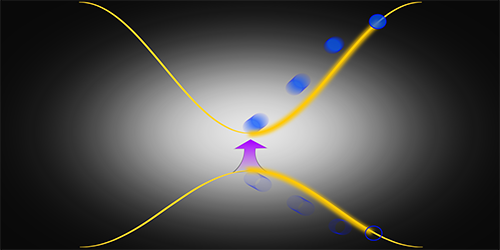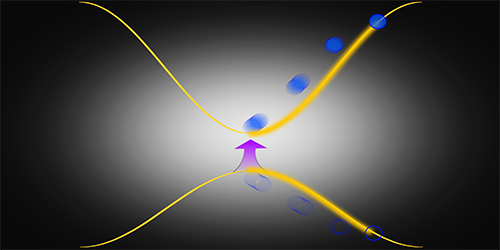Light Sees Electronic Bands
The electronic energy bands of a crystal govern key material properties like electrical conductivity and optical absorption. These bands are typically characterized with photoemission spectroscopy, which uses a laser to strip electrons from the material and then measures their energy and momentum. But such photoelectrons are sometimes impossible to detect. A team led by Paul Corkum at the University of Ottawa in Canada has now demonstrated an all-optical technique for reconstructing crystal band structures. The method replaces the detection of photoelectrons with that of light emitted by the sample.
Electrons can only travel short distances in a material or gas before being absorbed. Thus photoemission can only collect electrons coming from the surface of a solid and traveling to a detector in ultrahigh vacuum. This prevents the investigation of bulk solids, matter under high pressures or magnetic fields, and many surface processes occurring under ambient pressure, such as catalytic reactions. The new method developed by the Ottawa team might be able to tackle these situations.
The scheme employs an intense infrared-laser pulse to excite a sample's electrons from the valence to the conduction band, creating electron-hole pairs. The electrons and holes travel in the conduction and valence bands, respectively, in a way that depends on the shapes of such bands. A second laser is then used to stimulate their recombination, which is accompanied by the generation of even multiples of the original laser frequency (even harmonics). In a proof of principle experiment on a zinc oxide sample, the authors show that the analysis of these harmonics allows the characterization of the conduction and valence bands of the bulk solid.
This research is published in Physical Review Letters.
–Matteo Rini





